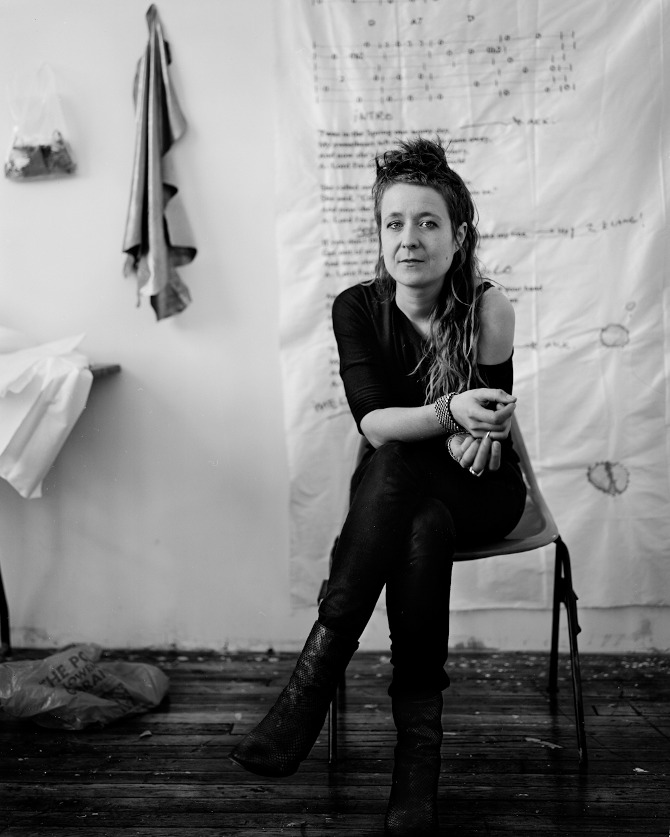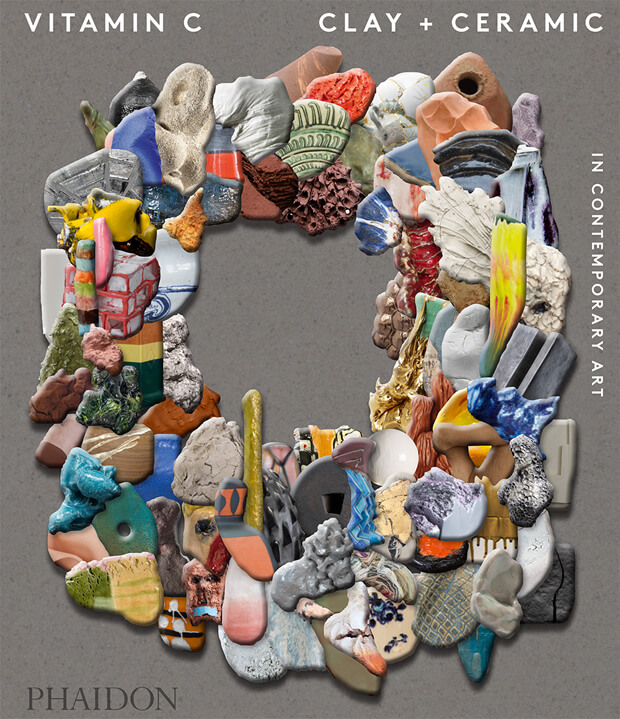
Rose Eken - Why I Create
Exploring the inspirations and attitudes of artists working with clay and ceramic, featured in Vitamin C
Wrapping paper, chocolate, stearin wax, steel, porcelain, nylon, plastic, wood, soap, bread, egg, glass, rubber and even Google – Rose Eken’s works could be seen as an inventory of all the materials which lend themselves to a contemporary sculptural practice. However, in her work they are all transformed into clay. Rose Eken relentlessly creates an ever-expanding world of everyday objects, remodelled in paper clay. Her work lives in the tension between the mass-produced objects of everyday urban life and the dense materiality of her medium. Her concern is with the tactile workings of the production process and the expressive breath of clay – from lumpy, heavy earth to the elegance of the finest porcelain.
Here the Vitamin C: Clay and Ceramic in Contemporary Art featured artist tells us what she loves about the medium, how her porcelain objects are made to trigger memories, and why a porcelain drumstick is beautiful, though useless.
Who are you and what’s your relationship to clay and ceramics? Rose Eken. Clay is a congenial material – it's soft and palpable and it’s versatile. Its dense clumsiness always reminds me of some inept Christmas decoration or ashtray–like-object made in first grade in school. Yet clay can be modelled to the thinnest objects or become the finest china – it is fragile and poetic. You could say that clay spans from the deepest bass to the highest pitch. I like this thought a lot. I always attempt to challenge clay as a material. I aim to preserve this dialogue between these two opposites pitches within the individual piece challenging the material to its limits.
Why do you think there’s an increased interest around clay and ceramics right now ? That’s very hard to say really. Why do trends occur? What starts them? I believe there is an increased interest in crafts in general – in the handmade; be it ceramics, knitting, crochet, embroidery etc. etc. Perhaps ceramics or ‘the handmade’ allow for reflection in a different way. The process of making definitely does this for me at least. Perhaps it brings us closer to the essence of things. As I said, I believe clay is a congenial material – thus perhaps we are drawn to it because we need this ‘thing’ in our world right now.
Ceramics is sometimes regarded as decorative, rather than fine arts. Does the distinction bother or annoy you? I guess perhaps it does rather – more because the idea somewhat suggest that one is better than the other – which obviously is wrong. Really, I’m not a ceramicist and I won’t ever become one even though I work with clay. It’s a material as any other so the distinction, I guess, is in the approach to it – the way of thinking it.
Whose work in this field do you admire? Plötslich diese Übersicht’ by Peter Fischli & David Weiss is probably one of my all-time favourite art pieces or collection of art pieces ever! In many ways it was also the piece which inspired me to start working with clay myself. It’s not so much about how they did it - it is the ingeniousness of each individual scenario. Like the egg of Columbus.
What are the hardest things for you to get ‘right’ and what are your unique challenges? Not getting it right! – not controlling everything. Abandoning the idea of control and allowing for mishaps and mistakes is crucial.
What part does the vulnerability of the material play in things? It's very much an attraction. I have, for example, used the idea of the object breaking as an integral part of the piece. A drumstick in unfired clay for example rather defies the purpose. It will break. It will shatter into a thousand pieces at first beat. It is so fragile. Just like the feeble balance - the make-it-or-break-it state between a musician or artist’s success or failure.
Is how you display a piece an important element of the work itself? Do you ever suggest how something might be displayed? Yes – I make suggestions to the collector or buyer but my way is not necessarily the one and only way the piece or collection of pieces can be displayed – it is always open to change. I mean you can replace or rearrange different objects and thus you change their relation and meaning.
I have always looked at and drawn inspiration from still-life paintings. Still-life is about staging objects – depicting inanimate subject matter - commonplace objects such as food, bottles, books, dead animals, sculls, using the symbolism of these in order to tell a particular story. This is also very much at the core of my practice. I reframe or offset objects in order to create a narrative and trigger my audience’s own imagination and memories.
You could say my work points to our desire to give meaning to the world around us, the way we project our personal stories on to objects and places and create our own subjective reality. I work with flashes of memory, with moods and states of mind, fragments of individual and collective history that can be assembled into a picture of our past and thereby also point to how we perceive ourselves here and now and in the future.
What’s next for you, and what’s next for ceramics? I have a museum show at MOCA in Tucson, Arizona, opening in January and a second museum show at Horsens Art Museum in Denmark in fall 2018. I have an upcoming solo show at my gallery V1 Gallery in Copenhagen this coming spring. Lastly, I’m also about to start working on a large outdoor commission for the RagnaRock-Museum in Roskilde, Denmark which is going to be super exciting and challenging working on a grand scale in many different media. I have no idea what’s next for ceramics but I am looking forward to exploring, experimenting and finding out!

Clay and ceramics have in recent years been elevated from craft to high art material, with the resulting artworks being coveted by collectors and exhibited in museums around the world. Vitamin C: Clay and Ceramic in Contemporary Art celebrates the revival of clay as a material for contemporary artists, featuring a wide range of global talent selected by the world's leading curators, critics, and art professionals. Packed with illustrations, it's a vibrant and incredibly timely survey - the first of its kind. Buy Vitamin C here. And if you're quick, you can snap up works by some of the artists in it at Artspace here.